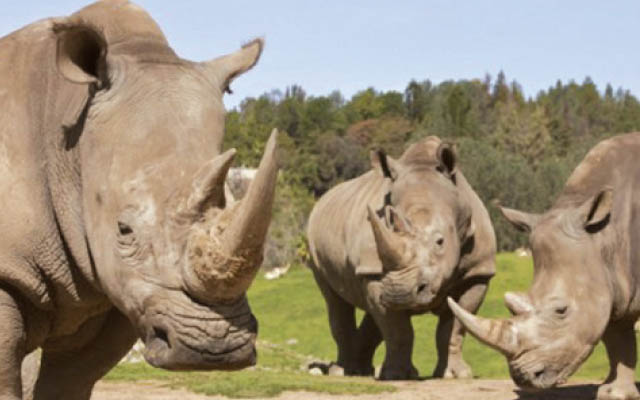‘Now Rhinos Speak’ project gains momentum


The satellite technology will allow wardens, vets and specialists in game parks to access readouts of the movements of the animals three times a day
Business Reporter
Zimbabwe’s rhino population and anti-poaching programmes will benefit from Sigfox Foundation’s initiatives, which target to attach satellite devices on 3 000 rhinos across the Southern Africa region under the “Now Rhinos Speak” project. Sigfox is working with Eutelsat, a French based satellite operator, who is providing satellite capacity to collect data in the fight against poaching of the depleting rhino population.
According to Save the Rhino, post 2010 was the region’s worst period in which the highest number of rhinos were poached. Kenya lost 59 animals or 5 percent of national rhino population. Zimbabwe lost at least 50 rhinos to poaching in 2015, which was more than double the previous year and Namibia lost 80 in 2012.
But the satellite technology used allows implementation of remote tracking solution for rhinos that uses GPS sensors fitted on the horn of each animal to send positioning data to secure on line platform via the satellite.
“All the countries in Africa are now under threat. The illegal horn market is more evaluated than cocaine market,” said Sigfox Foundation general manager Marion Moreau, via email. The technology will allow wardens, vets and specialists in game parks to access readouts of the movements of the animals three times a day.
“Having the exact positions continuously is very important and we could expect to produce an alert when the animal is taking risk, for instance moving close to the fences. It is easy to use and we are testing it,” she said.
Prior partnership, Eutelsat and Sigfox have collaborated since November 2016 on an initial operation in Southern Africa connecting approximately ten animals which improved the identification of location of areas of surveillance and refined allocation of resources for protection on the ground.
Now the two organisation are targeting 3 000 rhinos in the next three years. Research shows that in just a decade, more than 7 245 African rhinos have been lost to poaching.
“By tracking the animals, we can protect them from poachers and better understand their habits to encourage them to breed and ultimately conserve the species,” said Moreau.
According to WWF, the majority of white rhinos are in four countries, Zimbabwe, South Africa, Kenya and Namibia but the northern white rhinos and southern white rhinos are genetically distinct subspecies and are found in two different regions in Africa.
Save the Rhino estimates that there were half a million rhinos across Africa and Asia at the beginning of the 20th century, which has since dwindled to 29 000 living in the wild, according to the group.
“But we know that Zimbabwe has led very good initiatives in the past to face conflicts and protect its rhinos population. We aim to help and make our best efforts to upgrade that,” said Moreau.










Comments